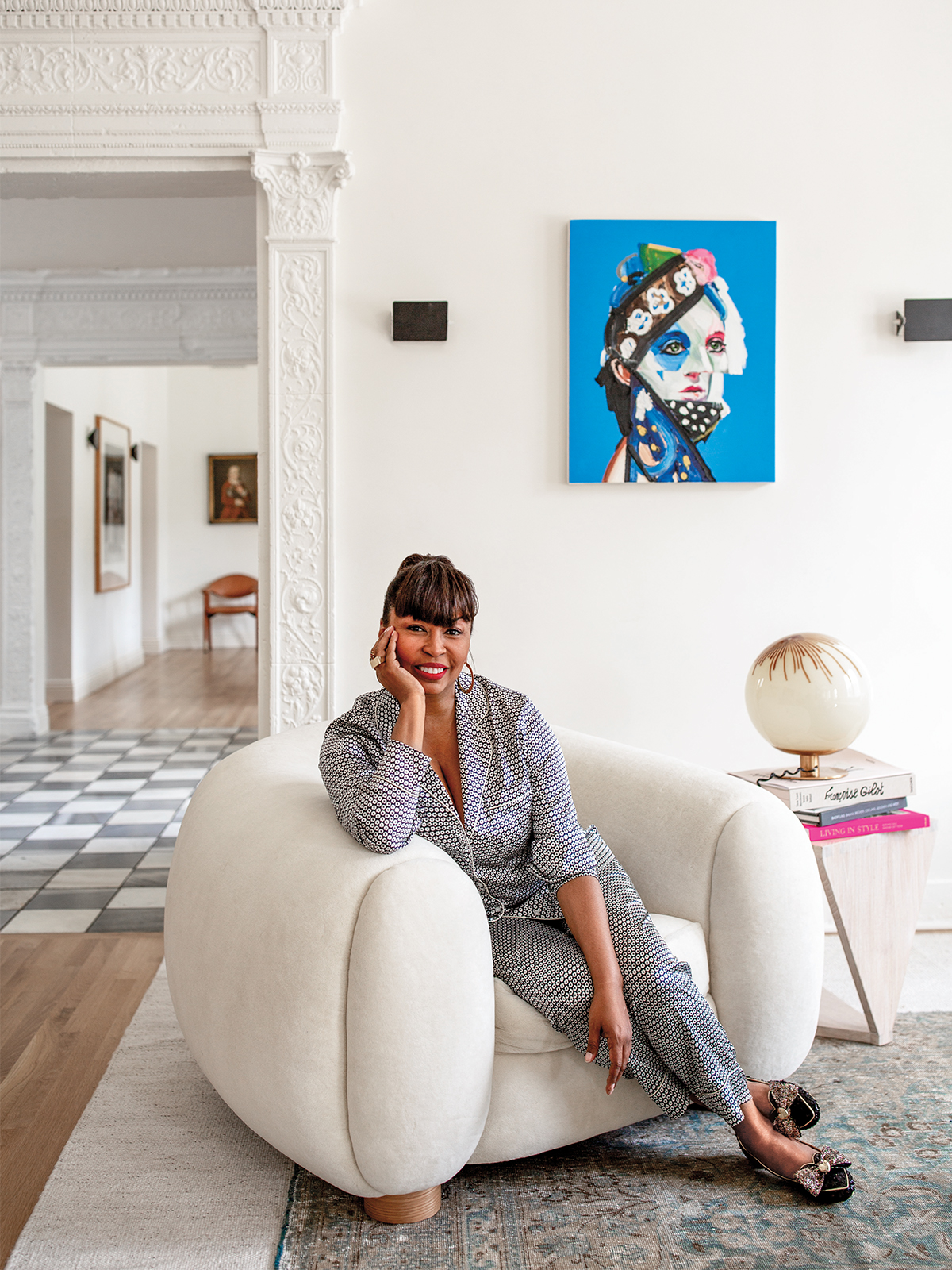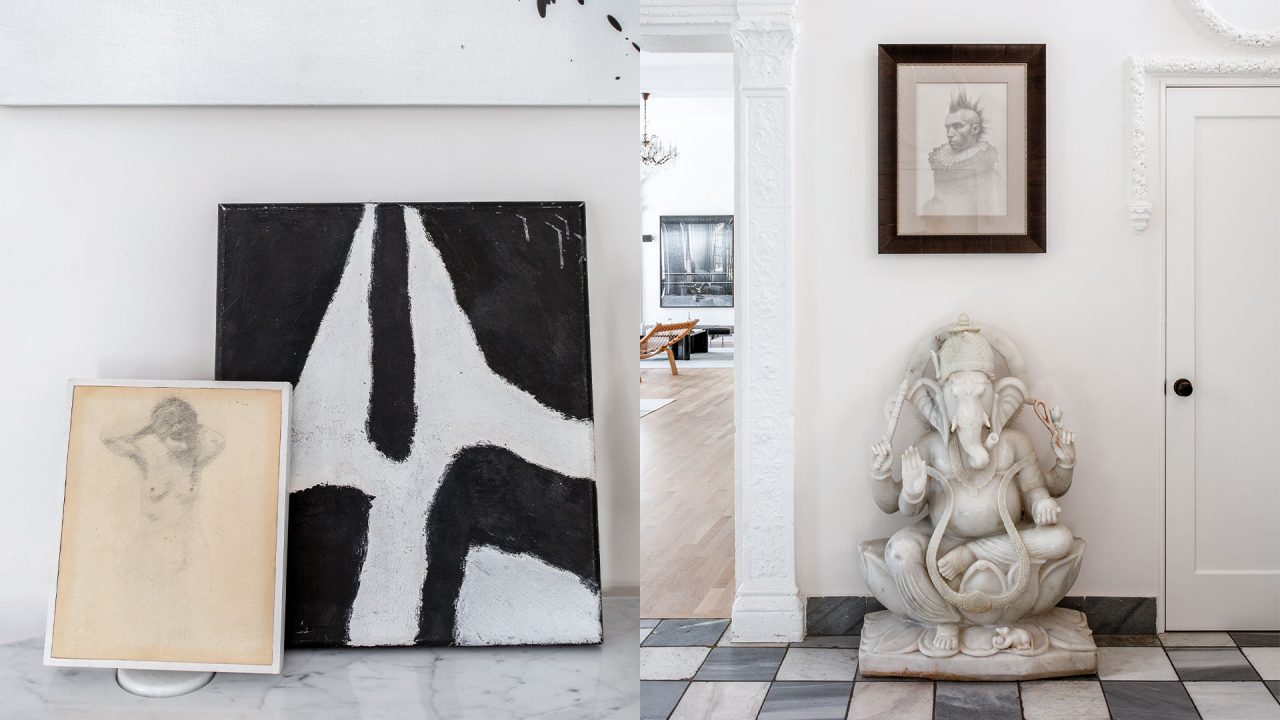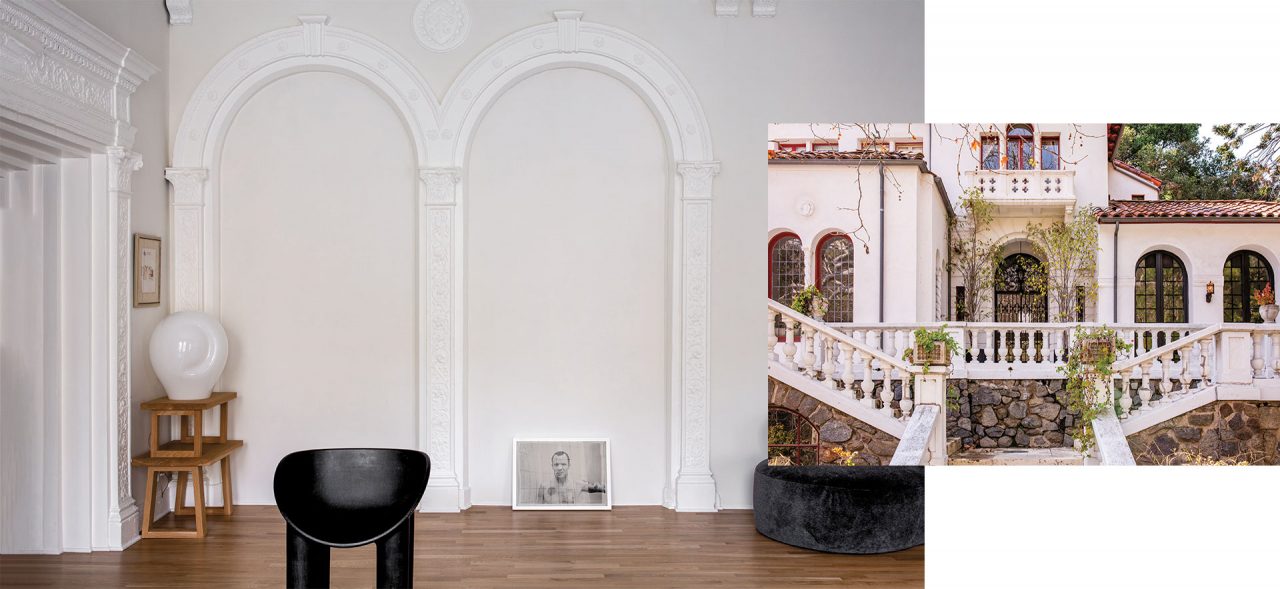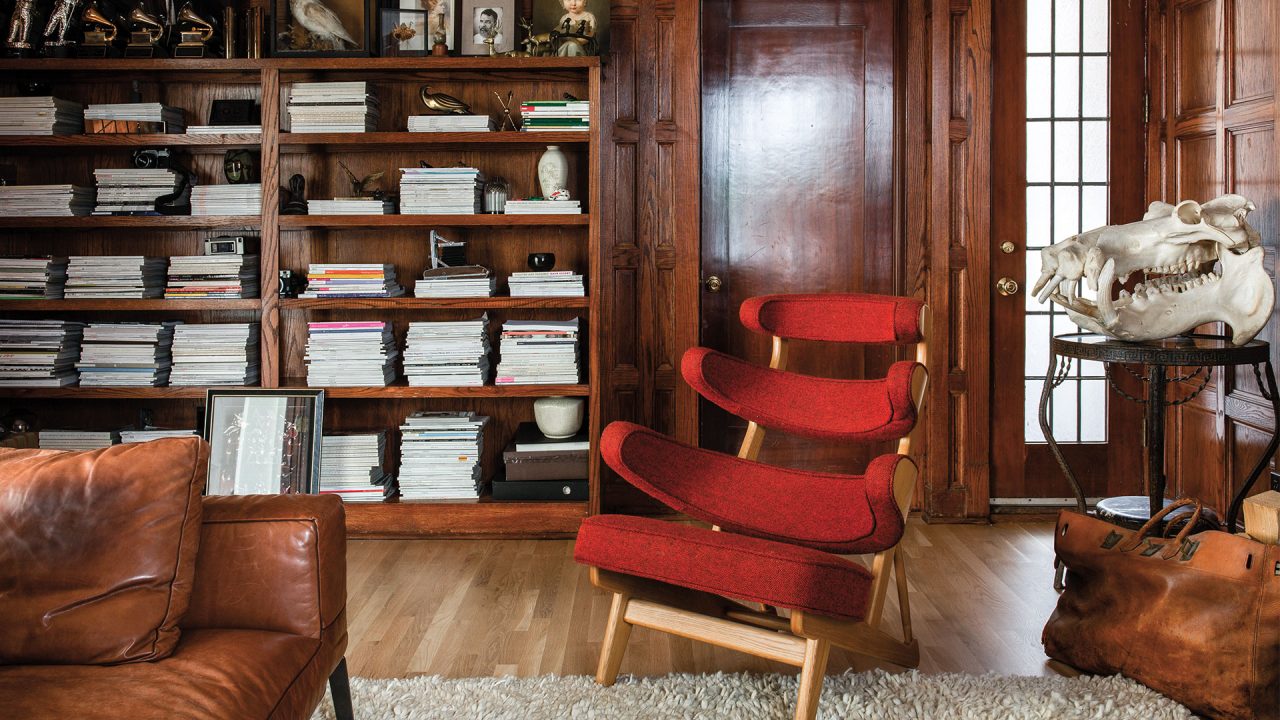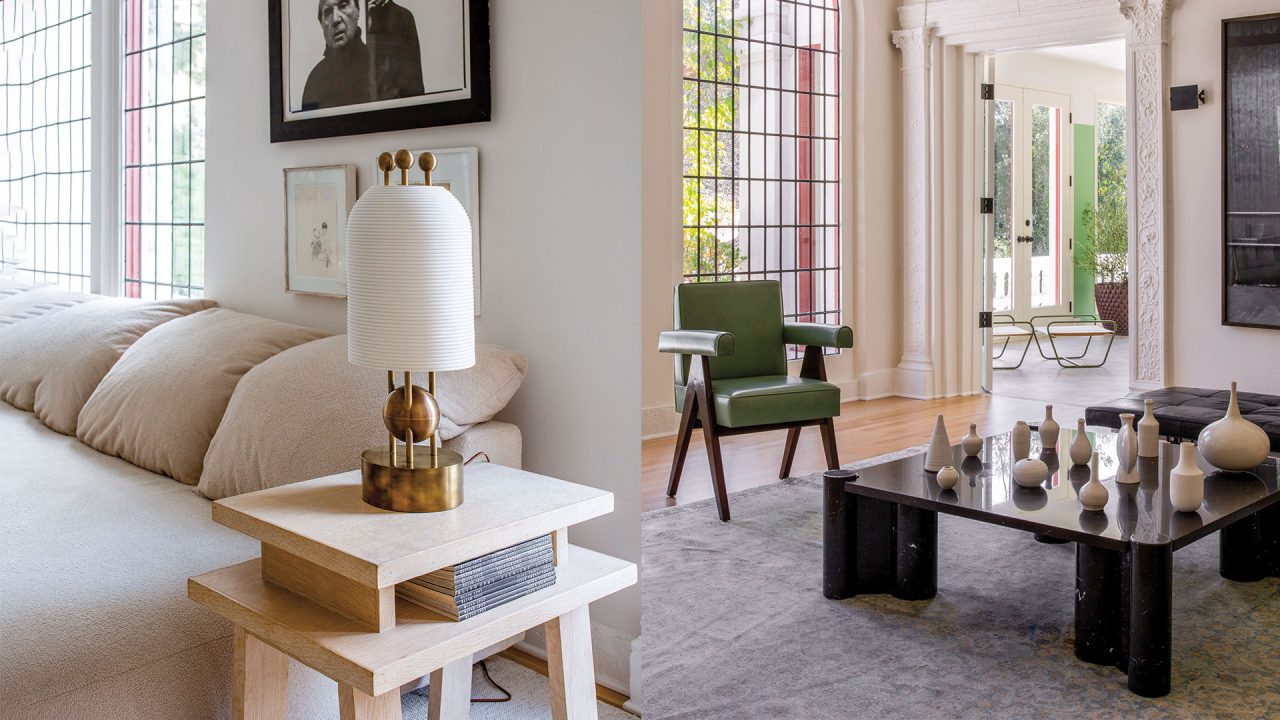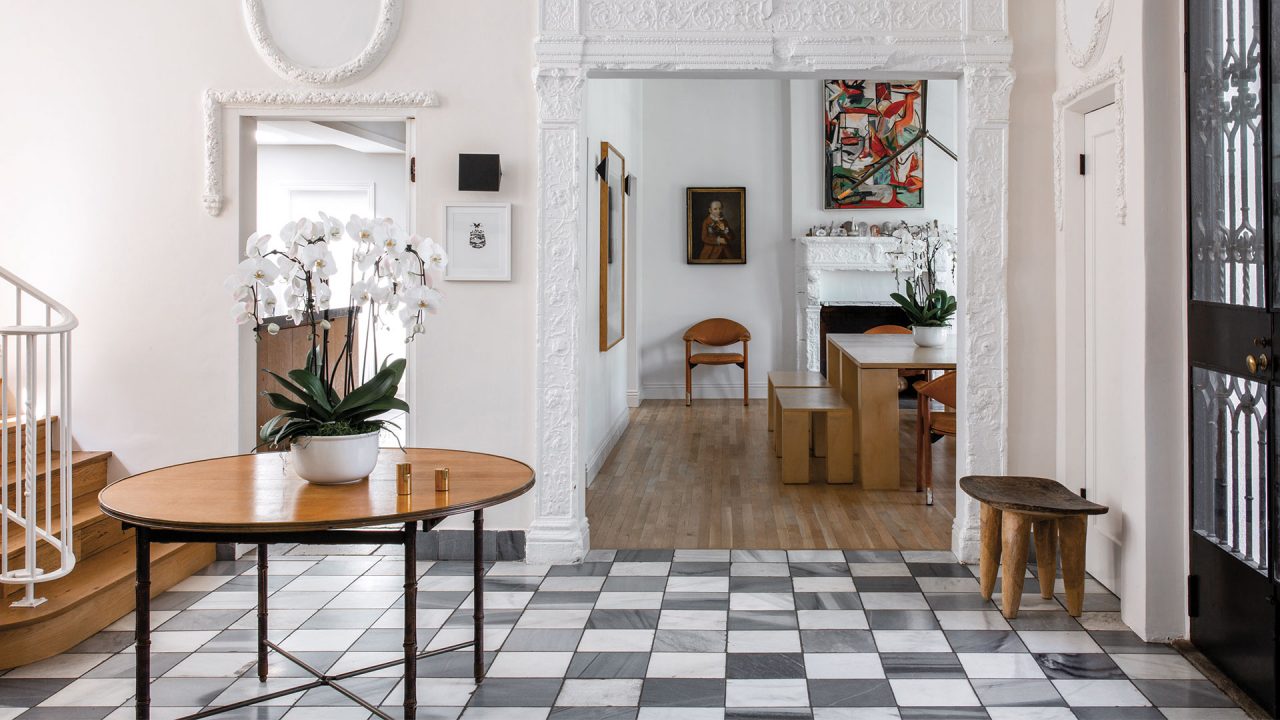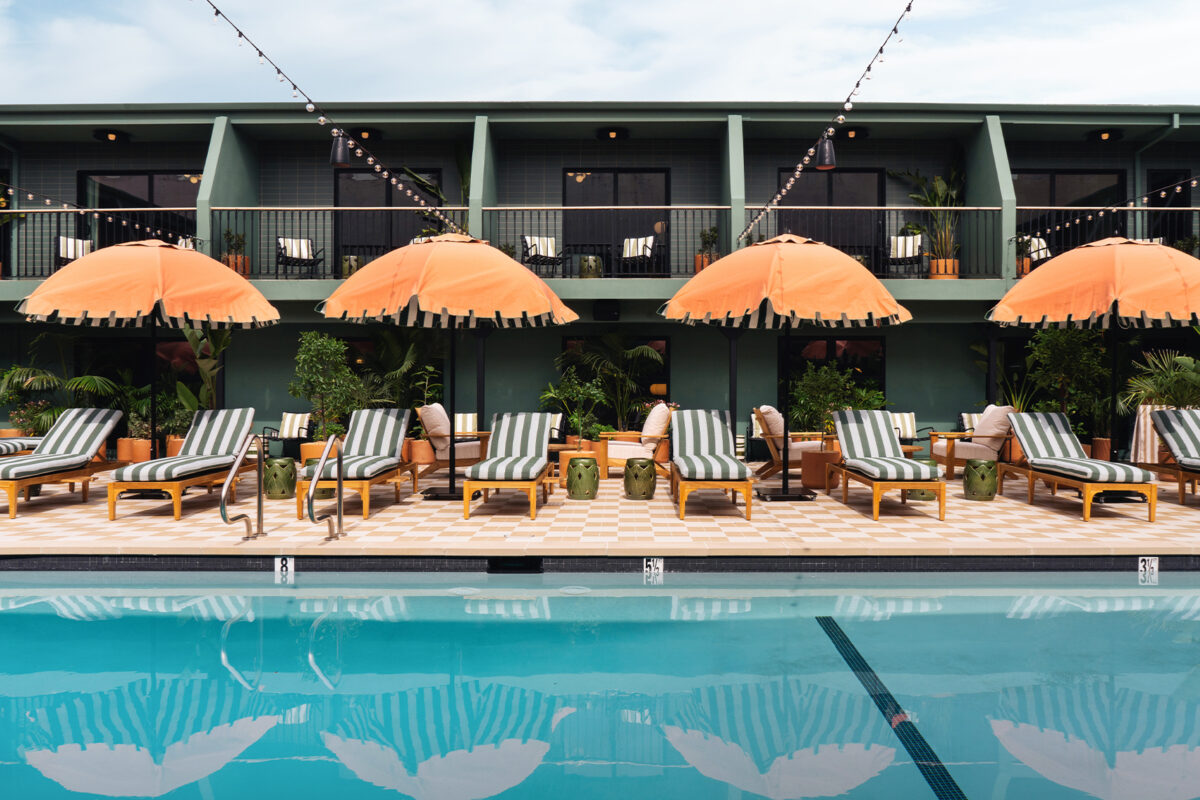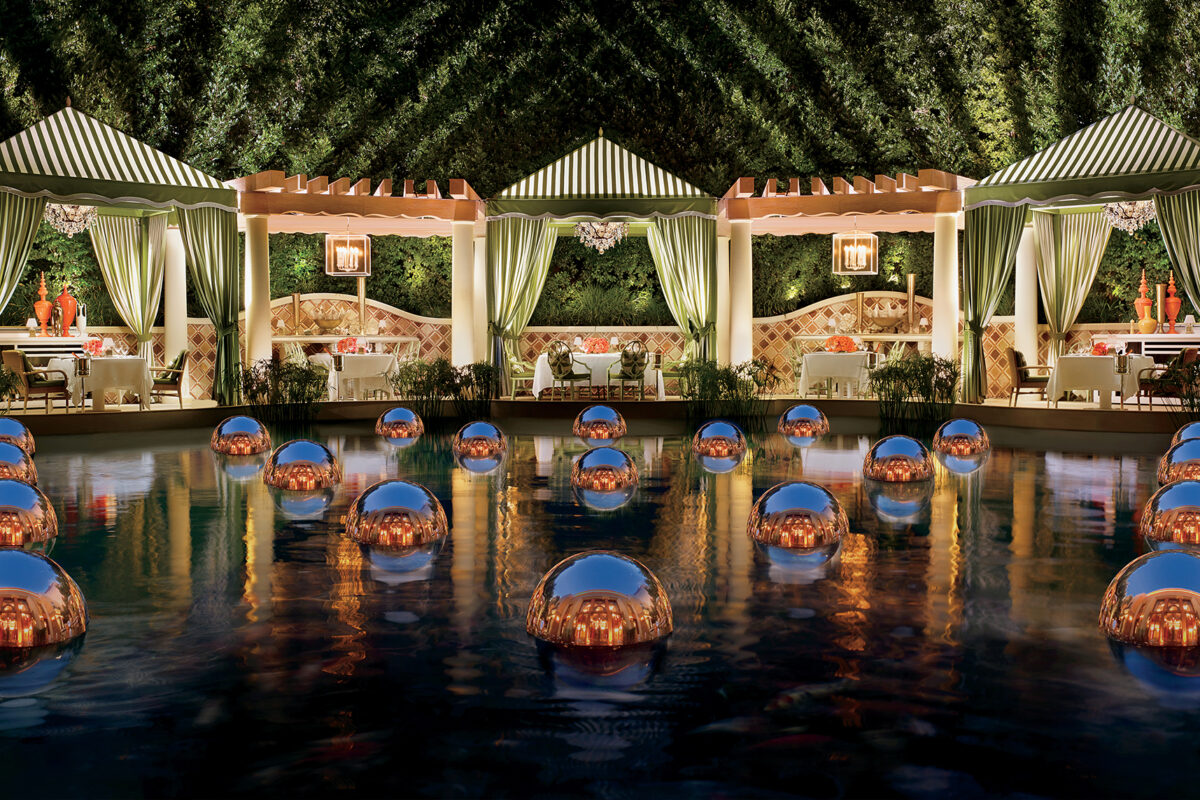How the interiors guru transformed a home effused with rock glamour and gave it soul
Words by MELISSA GOLDSTEIN
Photography by SHADE DEGGES
“There are two schools of people,” says interior designer Brigette Romanek. “People who have partied in this house, and people who drive past it every day and have never seen it.”
She’s referring to the stately 1925 residence she shares with her husband, filmmaker Mark Romanek, and their daughters, Willow, 13, and Isobel, 10, in Laurel Canyon. And the same way a song can instantly imprint in your mind, once you’ve been introduced to the family’s home, it’s hard to remember a time you weren’t familiar with it.
This could be because said residence is steeped in pop culture lore. Over its nine decades it’s hosted everyone from 1930s resident Errol Flynn to Jimi Hendrix and Mick Jagger (in its early incarnation as a recording studio in the ’60s and ’70s), and more recently, Red Hot Chili Peppers, LCD Soundsystem and Thom Yorke.
Behind a sliding wood gate, steps from the vehicular anthill that funnels to Sunset Boulevard, the Mediterranean-style structure rises above a 2.5-acre plot. The entrance unfurls in myriad grand stairways for a choose-your-own-adventure path to the front door.
The interior offers more surprises, courtesy of Brigette, a newly named addition to Architectural Digest’s prestigious AD100 list, who is also currently working on residences for Beyoncé and Jay Z (“so knowledgeable and involved — they know it and they know it beautifully”), Gwyneth Paltrow (“one of the greatest people I’ve ever met — and she’ll tell you if something isn’t working”), Demi Moore and Kelly Rowland, among others.
“It gave me everything when I walked in. It had so much energy and heart”
The entry, with its Jacques Adnet table crowned with an erupting orchid plant, and its French chateau-sourced muted gray checkerboard floor tile, sounds a refined opening note. To the left, the living room stretches, gallery-like for a full 41 feet, framed by brilliant white neoclassical moldings and featuring an uncluttered array of era-spanning greatest hits. A pair of Jean Royere polar bear chairs sits opposite a reupholstered DDC sofa, above which hangs a photograph by Richard Avedon. A Hans Wegner chaise makes a case for a languorous pause, bisecting the space, and a vintage Knoll table is topped with a collection of vessels sourced mainly from Galerie Half and abutted by a Pierre Jeanneret Senate Committee chair. Beyond that, a solarium houses fig trees and ficuses in David Cressey pots as well as a Ludwig drum set and a rideable stuffed giraffe belonging to Isobel, which somehow works brilliantly in this context — like throwing a Jeff Koons in the mix, without the price tag.
Back down the hall is the immaculate kitchen (“Because I don’t cook,” she jokes of its pristine appearance) skinned in Belvedere black marble. And in the neighboring dining room, an Apparatus chandelier hangs above a utilitarian wood dining table whose patina bears traces of the kids’ art projects. This is where we sit to unpack the designer’s approach.
A self-taught, self-professed “creative soul,” Brigette overwhelmingly cites “instinct” as her modus operandi. Formative influences include a nomadic upbringing by her jazz singer mother, Paulette McWilliams; Brigette’s extensive library of design books; and the environments of creative friends, including Rosetta Getty and Lisa Eisner. She is aesthetically porous. “If it’s good, it’s good: I love Spanish, I love modern, I love traditional. I love it all,” she says.
Her interiors ascribe to the idea that no element is filler. “I like pieces that stand alone and collectively make a huge beautiful space — but each is its own story,” she says. A work from Scott Campbell’s “Dollar Art” series, for example, adds edge to the environs, but also has special significance: Campbell created the designer’s inner wrist tattoo (a delicate double heart that symbolically nods to every member of her family). “I like things that make you feel something,” she says.
Four and a half years ago, it was the estate’s then-owner, music super-producer and Def Jam Recordings co-founder Rick Rubin — best friend to Mark — who suggested the Romaneks make their life here. “It made no sense. A family hadn’t lived here in, I don’t even know … ever?” Brigette says. “There was no air-conditioning or heating or proper kitchen. The staircase had come apart from the landing. But it gave me everything when I walked in. It had so much energy and heart. And I’m good at seeing what things can be,” she says. “We had to keep the funkiness,” she adds with a sense of custodial duty.
In three months, Brigette, then a handbag designer, made the place over — from removing existing decrepit elevators to replacing wrought-iron chandeliers with an eclectic range of fixtures including 1970s Murano glass and elegant crystal. “It’s fun to mix it all and make it ridiculous,” she says.
The fresh results caught the attention of the couple’s high-profile circle of friends, including model-turned-Baby2Baby co-president Kelly Sawyer Patricof, who enlisted Brigette in her own Malibu residence. That project would launch the designer’s business; clients including Joe Jonas and Pressed Juicery co-founder Hedi Gores followed. (She also has a business with fellow designer Estee Stanley, Hancock Design, for which the two introduce products through collaborations, such as a figurative line of wallpaper with artist Carly Kuhn.)
Work and pleasure intermingle for the Romaneks — they often entertain at home with their multitalented circle of friends — “By the end of the night no one wants to leave, which is my favorite. I feel like I’ve done my job,” Brigette says. The spouses also exchange artistic input: Mark’s more “intense” and “understated” taste is evident in the moodier wood-paneled den, where Grammys (for his videos for Michael and Janet Jackson’s “Scream” and Johnny Cash’s “Hurt”) and MTV Moonman statues are on display, and where he often likes to work on scripts (his directorial filmography includes 2002’s One Hour Photo and 2010’s Never Let Me Go).
The two met in 1995 on the set of one of Mark’s early videos for soul musician Steve Harvey, when Mark mistook Brigette for someone auditioning to be in the video. She was, in fact, dating Harvey and there to drop off his lunch. “I was so insulted!” she says. “I saw [Mark’s] work over the years and I always thought, ‘Ugh, that guy.’” They didn’t get together until about five years later, when they bumped into each other at L.A. restaurant Mandarette Chinese Cafe, where Mark was dining with Francis Ford Coppola, Jacqui Getty and Gia Coppola, and Brigette was fresh off a flight from New York. They traded numbers. “He called me the next day, and here we are, 15 years later,” she says.
Home continues to captivate her. Six months ago, she undertook an extensive refresh. It started innocently enough, with the replacement of the original dark wood floors, which were showing signs of wear and tear. “Then it became, ‘Well, maybe the fabrics need to change,’” she says wryly, nodding to a crew of workmen outside as if to acknowledge the knock-on effect.
The new wave of interiors has manifested in a scheme that’s “a mixture of wabi-sabi mixed with midcentury modern — more grounded, a little bit softer,” she says. Next up, she plans to redo the basement as a hangout for her girls and their friends. “So they can be here but not here,” she explains. Unsurprisingly, the Romanek house is social HQ for adults and tweens alike.
Chief among the recent acquisitions is a 30-year-old bonsai ficus from L.A. rare plant emporium The Tropics, prospering in another David Cressey pot. It takes pride of place in the living room, the sun shining a spotlight on it through the expansive arched windows. “It’s the greatest thing ever. I cannot believe that I get to own one of those,” she says as we sit on a tufted leather Poul Kjærholm daybed against the wall, admiring the view. “And that’s how I feel about all of it. I would have been unhappy had I not pursued something creative, but I have found the exact creative thing that I want to do, and I honestly can’t believe that I get to do it.” She pauses, then adds in a confessional whisper: “I’m kind of in shock all the time.”
This story originally appeared in the April 2019 issue of C Magazine.
Discover more DESIGN news.
